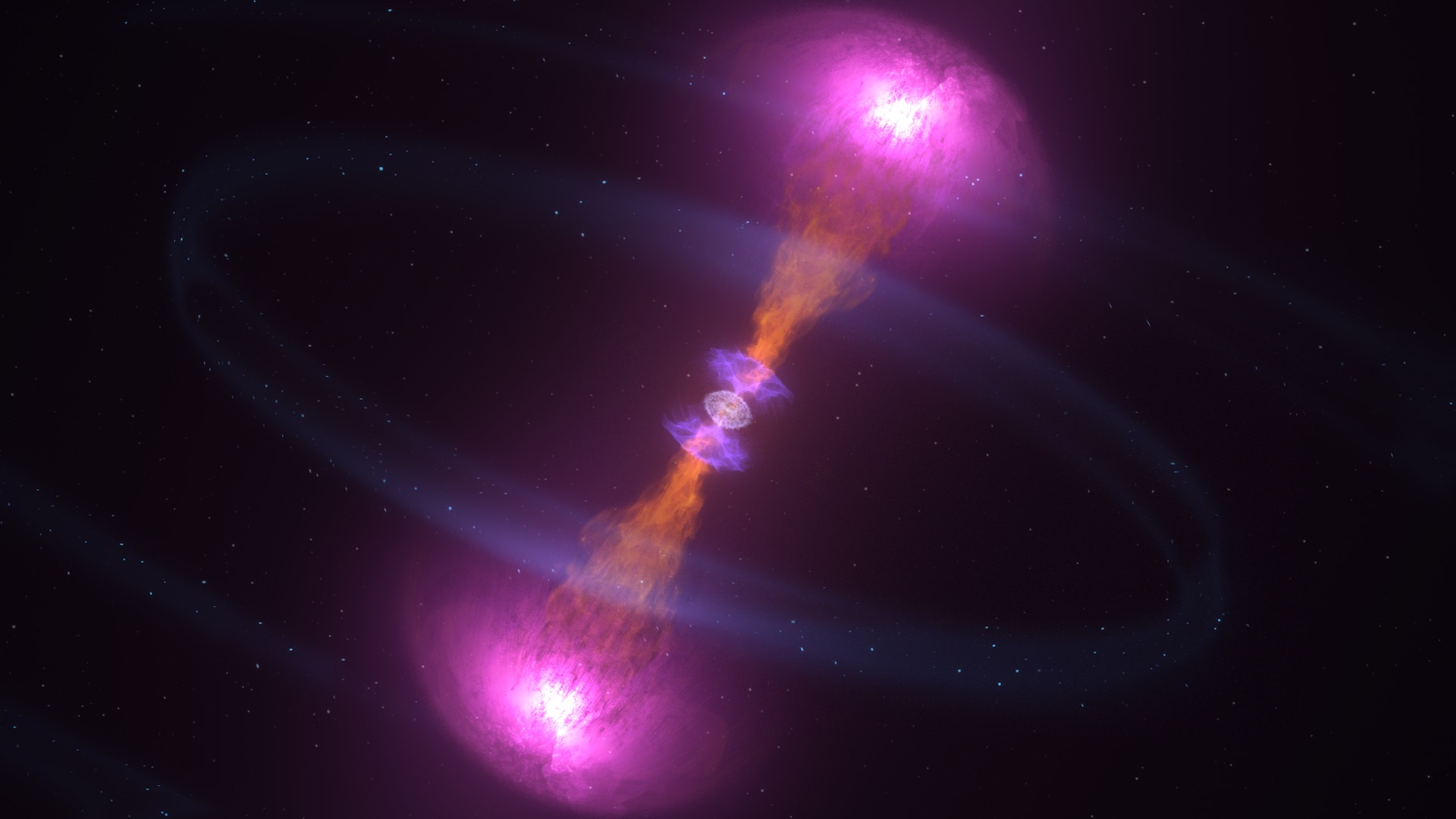Star Collision

Light bursts from the collision of two neutron stars.
Nearly 130 million light-years away from Earth, two neutron stars merged. These crushed, leftover cores of massive stars orbited around each other hundreds of times a second in a tight swirling dance that produced ripples through space called gravitational waves. Eventually the two neutron stars spun fast enough and close enough to each break apart and then merge together releasing energy in a gamma-ray burst and a flash of light called a kilonova. On Earth detectors and telescopes in space and around the world, including NASA’s Swift, Hubble, Spitzer, and Chandra telescopes, saw the light from the collision in August 2017. Combined with the groundbreaking detection of its gravitational waves by the National Science Foundation's Laser Inferometer Gravitational wave Observatory (LIGO) and NASA's Fermi Gamma Ray Space Telescope, scientists have a comprehensive set of observations that will help them test conclusions about the merging of neutron stars. Watch the video to learn more.
Watch this animation of two neutron stars colliding and the kilonova that followed.
Listen to the gravitational wave detected by LIGO, followed by a ding when the gamma-ray burst was observed by Fermi.

Some of the debris blasts away in particle jets moving at nearly the speed of light, producing a brief burst of gamma-rays.

The hot, dense cloud of debris from the neutron stars produced the kilonova's visible and infrared light.

X-rays (blue) were the last type of light observed in the remaining jet, spreading out laterally.

Swift's Ultraviolet/Optical Telescope imaged the kilonova (top left in the inset) on Aug. 18, 2017, which occurred in the galaxy NGC 4993.
For More Information
See NASA.gov
Credits
Please give credit for this item to:
NASA's Goddard Space Flight Center/CI Lab
Optical telescope image of kilanova is courtesy of NASA/Swift
-
Animators
- Brian Monroe (USRA)
- Scott Wiessinger (USRA)
-
Producer
- Scott Wiessinger (USRA)
-
Scientists
- Julie McEnery (NASA/GSFC)
- Brad Cenko (NASA/GSFC)
- Eleonora Troja (University of Maryland College Park)
-
Writers
- Francis Reddy (University of Maryland College Park)
- Trey Russell Mason (Experiential Learning Program, UMD)
Release date
This page was originally published on Monday, July 2, 2018.
This page was last updated on Sunday, January 19, 2025 at 12:15 AM EST.
